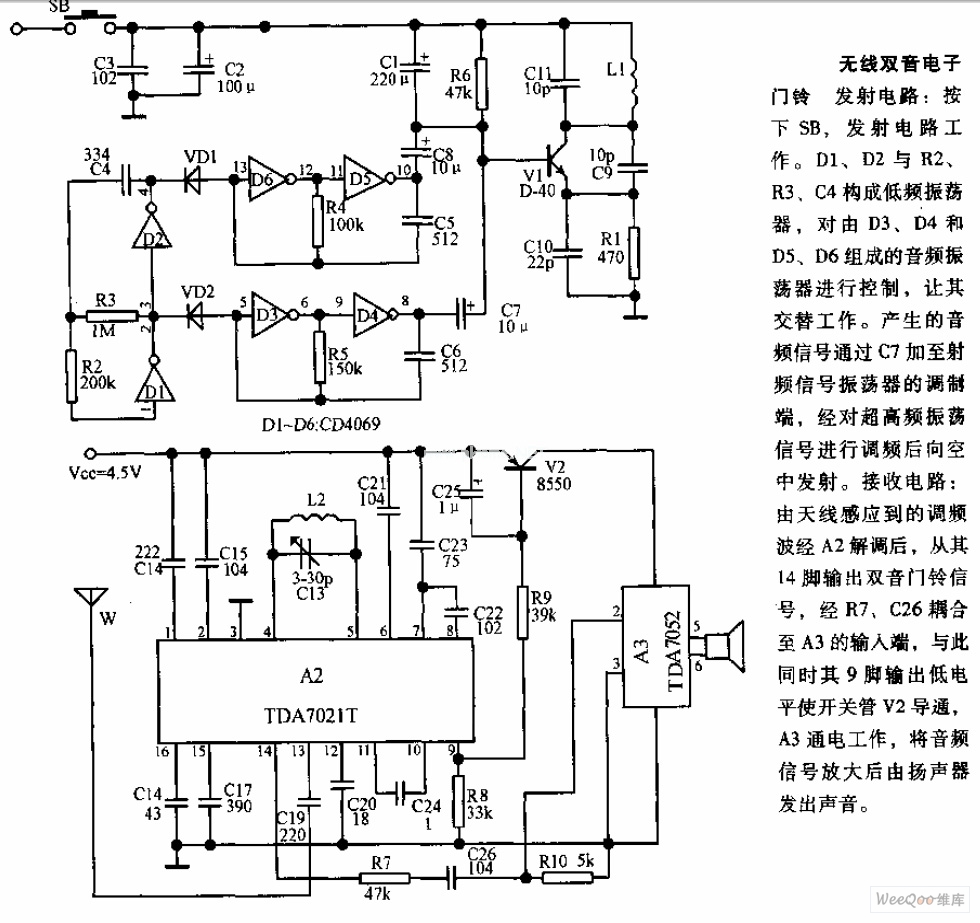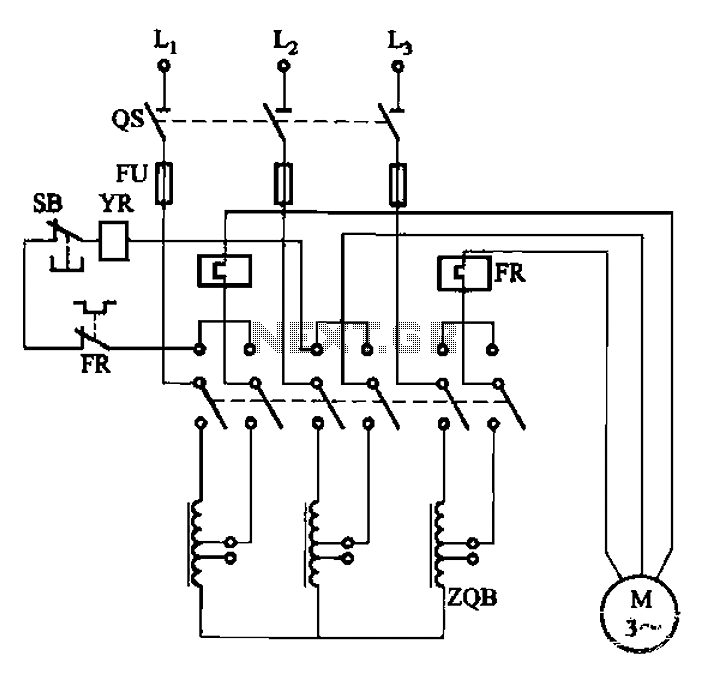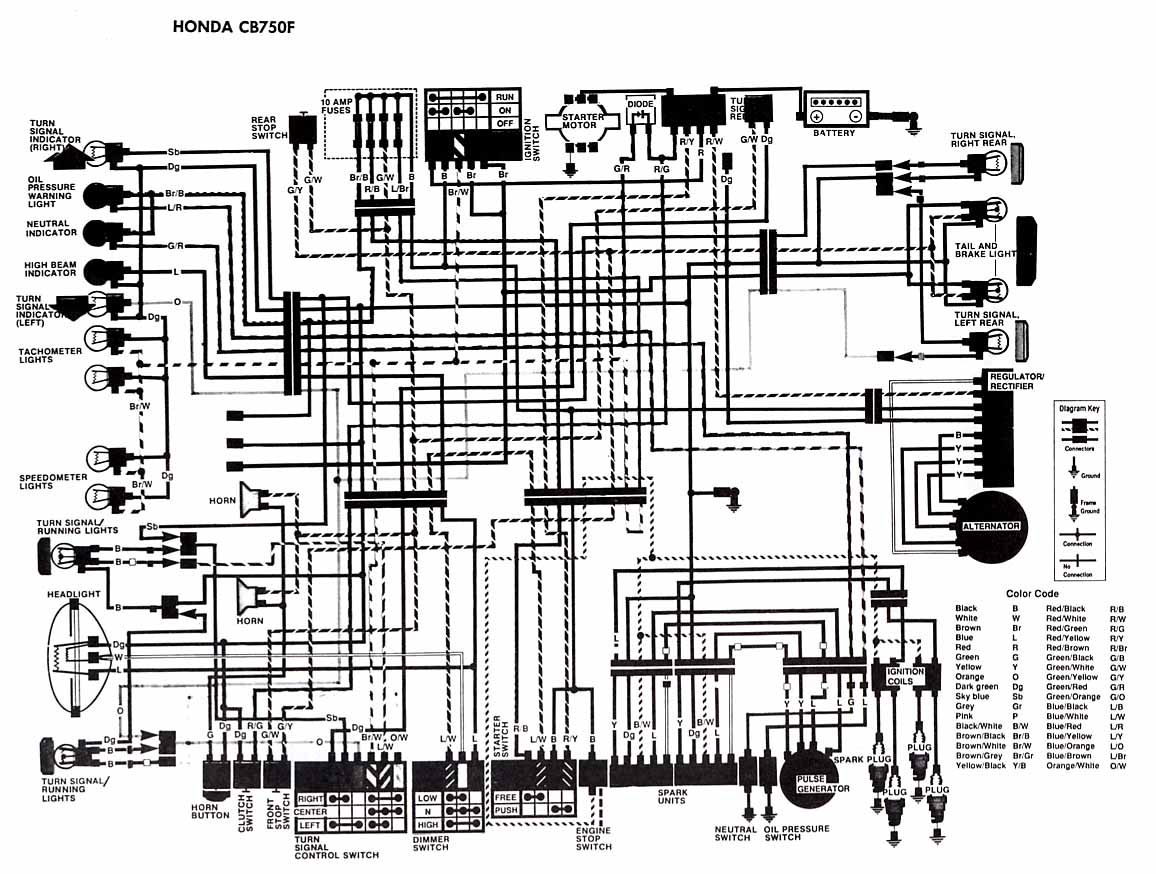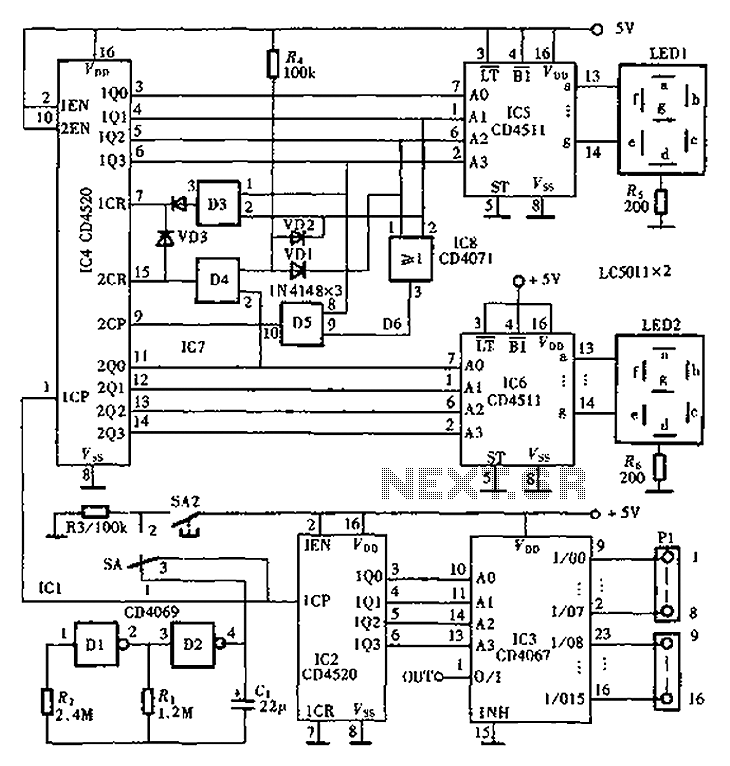
Bi-Directional Motor Control CIrcuit With NE555 IC
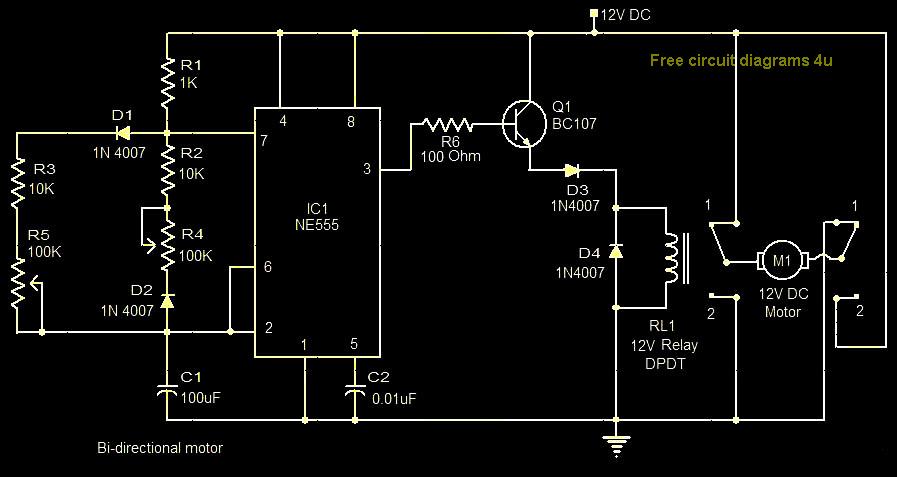
This circuit illustrates a bi-directional motor control circuit utilizing the NE555 integrated circuit (IC). Features include a 12V DC power supply, with the IC employed to control relay RL1.
The bi-directional motor control circuit designed with the NE555 IC allows for efficient control of a DC motor's direction and speed. The circuit operates on a 12V DC power supply, which is a common voltage level for many small to medium-sized motors.
The NE555 timer IC is configured in astable or monostable mode, depending on the specific application requirements. In this setup, the NE555 generates a PWM (Pulse Width Modulation) signal, which can be adjusted to control the speed of the motor. The output from the NE555 drives a relay (RL1), which acts as a switch to control the direction of the motor.
The circuit typically includes two relays (RL1 and RL2) to facilitate the bi-directional operation. By energizing either relay, the current flow through the motor is reversed, allowing the motor to rotate in either direction. Diodes are often included across the relay coils to prevent back EMF from damaging the NE555 when the relays are de-energized.
Additional components may include resistors and capacitors that set the timing characteristics of the NE555, as well as potentiometers for adjusting the motor speed. The design is suitable for applications such as robotics, conveyor systems, and any project requiring precise motor control.
Safety features may also be integrated into the circuit, including fuses and thermal cutoffs, to protect against overcurrent conditions. Overall, this bi-directional motor control circuit is a versatile solution for various motor control applications.This circuit shows about Bi-Directional Motor Control CIrcuit With NE555 IC. Features: 12V DC power supply, IC is used to control the relay RL1 .. 🔗 External reference
The bi-directional motor control circuit designed with the NE555 IC allows for efficient control of a DC motor's direction and speed. The circuit operates on a 12V DC power supply, which is a common voltage level for many small to medium-sized motors.
The NE555 timer IC is configured in astable or monostable mode, depending on the specific application requirements. In this setup, the NE555 generates a PWM (Pulse Width Modulation) signal, which can be adjusted to control the speed of the motor. The output from the NE555 drives a relay (RL1), which acts as a switch to control the direction of the motor.
The circuit typically includes two relays (RL1 and RL2) to facilitate the bi-directional operation. By energizing either relay, the current flow through the motor is reversed, allowing the motor to rotate in either direction. Diodes are often included across the relay coils to prevent back EMF from damaging the NE555 when the relays are de-energized.
Additional components may include resistors and capacitors that set the timing characteristics of the NE555, as well as potentiometers for adjusting the motor speed. The design is suitable for applications such as robotics, conveyor systems, and any project requiring precise motor control.
Safety features may also be integrated into the circuit, including fuses and thermal cutoffs, to protect against overcurrent conditions. Overall, this bi-directional motor control circuit is a versatile solution for various motor control applications.This circuit shows about Bi-Directional Motor Control CIrcuit With NE555 IC. Features: 12V DC power supply, IC is used to control the relay RL1 .. 🔗 External reference
